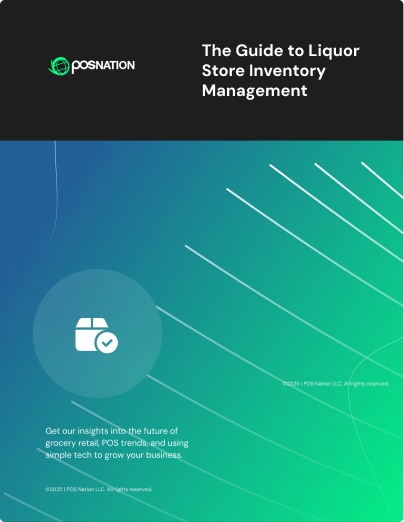Nothing ventured, nothing gained, right?
Opening a convenience store can be a very profitable business venture, but it comes with several start-up costs.
In this guide, we'll break down all the expenses associated with opening and running a convenience store, so you can make an informed decision about whether this is the right business for you.
We'll cover everything from startup costs to day-to-day expenses, so you have a complete picture of what to expect.
Let’s dive in.
How Much Does it Cost to Open a Convenience Store?
Let’s answer the big question straight away: It costs anywhere between $50,000 and $600,000 to open a convenience store.
Why do those initial costs have such a wide range? Because there are so many variables involved, such as:
- Location: What state you’re located in, how close you are to a city center, the size of your store, its condition, and desirability all affect the rental or purchase price.
- Existing equipment: Equipment covers everything from point of sale (POS) Systems and coolers to shelves, displays, drink dispensing machines, and more. If you aren’t taking over an existing location, you’ll likely have to buy all of these upfront.
- Franchise vs. independent: Joining a franchise can help draw in customers thanks to the immediate brand recognition, but usually comes with a fairly steep upfront fee (you may also have less independence when it comes to inventory selection and store layout).
- Initial inventory: Stocking the shelves for the first time can cost anywhere from $10,000 to $50,000.
With this type of investment, careful financial planning is essential. You need to be clear on what it will take to create a profitable business, how much money you are borrowing, and how to price your inventory to both make sales and earn enough profit.
Here’s a deeper dive into the seven costs you need to consider when opening up a convenience store:
1. Location
As the saying goes, “Location, location, location.” You want a convenience store location with high foot traffic, low competition, and favorable traffic patterns.
But how much will you need to invest to be in an area that gives you all three? Or at least two? The better the location, the higher the prices. Size and the condition of the property are also key aspects that will affect the price of your store’s location.
Real estate prices vary widely, but we’ll offer some examples to give you some general numbers to consider. The average commercial rent in the U.S. is about $29 per square foot/year, but can be as low as $10 or as high as $50 in more urban, high-traffic areas.
To understand how that translates to rental costs, we’ll follow this equation:

The average size of a convenience store is between 1,800 to 2,500 square feet. Here’s what monthly rent could look like for a convenience store of 2,100 square feet, depending on the cost per square foot:
- Low ($10): $10 x 2,100 ÷ 12 months = $1,750.00 per month
- Average ($29): $29 x 2,100 ÷ 12 months = $5,075 per month
- High ($50): $50 x 2,100 ÷ 12 months = $8,750 per month
And don’t forget about deposits, which are typically equivalent to one month’s rent.
2. Permits and Licenses
There are several licenses and permits you’ll need to operate your store legally.

These costs can vary greatly by state, so here are some average or general numbers to work with:
- Business license: $50 to $500 (plus annual renewal fees)
- Occupancy permit: $477 (national average, but can range from $150 to $1,500 or more). Note that not all states require an occupancy permit unless you’ve done major renovations.
- Alcohol/liquor license: $1,500 (national average, but can range from $100 to $13,800 depending on your state)
- Tobacco license: $15 to several hundred dollars, depending on the state, your convenience store’s location, and the month issued.
- Lottery retailer license: Typically $25 in most states. Depending on your state, you may also need to carry a surety bond valued at $15,000 that costs $10 to 15 per thousand dollars of coverage ($150 to $225) every month
3. Operating Costs
Operating costs are any expenses that your convenience store incurs on a daily basis to continue operating. These are things like:
- Inventory (we’ll dive deeper into that below)
- Staff wages
- Payroll taxes
- Utilities and monthly subscriptions
- Healthcare insurance
- Liability insurance (also covered in depth below)
- Card processing fees
- Repairs/maintenance
- Marketing and advertising
Creating a budget and leveraging the reporting on your point of sale system will help you identify areas you can increase or decrease spending.
4. Equipment Costs
Start with the basics on equipment, and be particularly focused on the equipment that allows you to provide the beverages, snacks, and hot food that are big sellers for convenience stores.
You’ll also need equipment for any storage areas, walk-in coolers, and employee-only areas.
Here are a few of the costs for typical convenience store equipment (these are ballpark ranges, not exact):
Drink dispensers
- Frozen drink machine: $970 to $19,950
- Juice dispensers: $680 to $3,700
- Coffee & hot chocolate machines: $600 to $3,150
- Iced coffee dispenser: $2,500+
- Soft drink dispenser: $2,100 to $24,000
Refrigerated display cases
- Single-door swing cases: $1,000 to $2,700
- Double-door swing cases: $3,400 to $5,000+
- Sliding door cases: $2,600 to $7,000+
Open-air coolers
- Vertical: $1,900 to $31,000
- Horizontal: $3,700 to $30,400
- Undercounter: $8,300 to $12,400
If you’re taking over an existing store, don’t assume that all of your equipment is ready to use. Give fridges and all food serving equipment a thorough once-over to ensure it’s safe to use.
5. Insurance
You’ll need insurance for your convenience store for several reasons.
First, you may need general liability insurance just to get your business license (depending on your state and city regulations). But you’ll also need it in the event a customer files a lawsuit against you.
The price range of a standard $1 million general liability policy can range from $57 to $89 per month, depending on your location, services, sales, payroll, and experience.
Related Read: How Much Is Small Business Insurance? Here's Our Breakdown
Second, since you’ll have employees, you’ll need workers’ compensation insurance to hire and have employees working for you. Given that the average cost of a workers’ compensation claim is $40,000, having insurance is also a way to protect your business.
For small businesses like convenience stores, $50 to $70 per month is a good number to plan with for workers’ compensation insurance.
And finally, you need insurance in place to protect the thousands of dollars worth of inventory and equipment in your store.
6. Inventory
Inventory will be one of the biggest startup costs for your convenience store. It can cost as much as $50,000 to stock a convenience store.

However, this is another cost that can fluctuate greatly based on a few variables, such as:
- Number of products you need to stock
- Product selection — basic to premium level snacks
- Wholesale financing (Costco, etc.)
- Prices for goods by region
- Whether you’re part of a franchise or independent
When selecting your initial inventory, start with a mix of reliable staples. Then, use the sales reports from your POS system to see what’s popular and refine your product list over time.
7. Point of Sale (POS) System
There may be no more important piece of equipment for your convenience store than your POS system.
From processing transactions and recording sales data to managing inventory, helping you segment customers for promotions, and employee management functions, your convenience store POS system unites your operations in one piece of equipment.
Outdated POS systems make your job harder in the long run:
- Inventory management takes more time and is prone to mistakes when using spreadsheets.
- Employee management and payroll are cumbersome when done by hand.
- You can’t get all the data you need to improve customer service and reduce overhead.
That’s why it’s crucial to invest in a modern POS system. But what will it cost you? When evaluating convenience store POS system costs, consider the costs of your hardware (such as a touchscreen terminal, receipt printer, scanner, and cash drawer) and the software itself.
On the software side of things, subscription POS software is the norm, with most vendors in the $49 to $150 per month range.
How Much Does it Cost to Open a Convenience Store? It Depends
As you can see, there are many factors to consider when opening a convenience store. You need to determine your budget and then decide how to use it best. Costs can spiral out of control if you’re not careful and don’t have a plan.
Once you have a location, inventory, and equipment purchased, you should look at POS systems. Remember, the ideal point of sale solution will make managing your convenience store’s operations smooth and easy.
POS Nation specializes in matching small business owners with the industry-specific tools they need to reduce costs, stay competitive, and win customers.
Download our free Convenience Store Point of Sale Buyers’ Guide to make an informed purchase decision or talk with one of our convenience store experts today.







 by Brian Sullivan
by Brian Sullivan

 by Gina Obert
by Gina Obert

